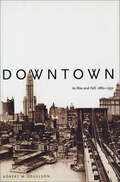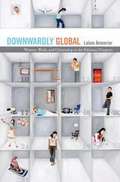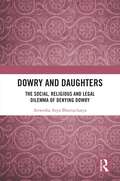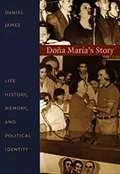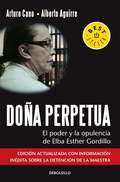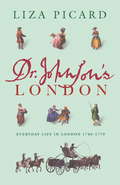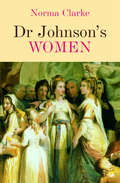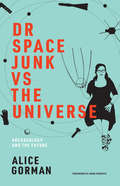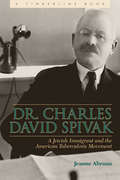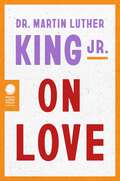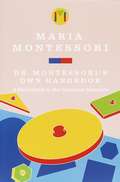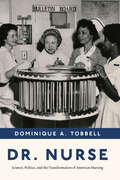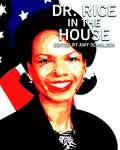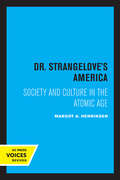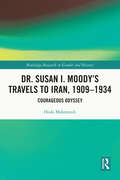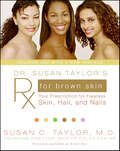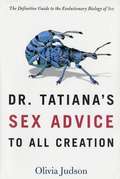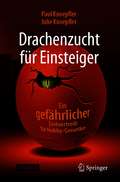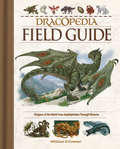- Table View
- List View
Downtown: Its Rise and Fall, 1880–1950
by Robert M. FogelsonWinner of a Lewis Mumford Prize: “Extremely engaging reading for those interested in the history of cities and urban experience.” —Booklist Written by one of this country’s foremost urban historians, Downtown is the first history of what was once viewed as the heart of the American city. It tells the fascinating story of how downtown—and the way Americans thought about downtown—changed over time. By showing how businessmen and property owners worked to promote the well-being of downtown, even at the expense of other parts of the city, it also gives a riveting account of spatial politics in urban America.Drawing on a wide array of contemporary sources, Robert M. Fogelson brings downtown to life, first as the business district, then as the central business district, and finally as just another business district. His book vividly recreates the long-forgotten battles over subways and skyscrapers in the late nineteenth and early twentieth centuries. And it provides a fresh, often startling perspective on elevated highways, parking bans, urban redevelopment, and other controversial issues. This groundbreaking book will be a revelation to scholars, city planners, policymakers, and anyone interested in American cities and American history.“A thorough and accomplished history.” —The Washington Post Book World"Superlative . . . a vital contribution to the study of American life.” —Publishers Weekly“A superbly thorough analysis of the causes of inner-city blight, congestion, and economic decline in mid-20th century urban America.” —Library JournalIncludes photographs
Downwardly Global: Women, Work, and Citizenship in the Pakistani Diaspora
by Lalaie AmeeriarIn Downwardly Global Lalaie Ameeriar examines the transnational labor migration of Pakistani women to Toronto. Despite being trained professionals in fields including engineering, law, medicine, and education, they experience high levels of unemployment and poverty. Rather than addressing this downward mobility as the result of bureaucratic failures, in practice their unemployment is treated as a problem of culture and racialized bodily difference. In Toronto, a city that prides itself on multicultural inclusion, women are subjected to two distinct cultural contexts revealing that integration in Canada represents not the erasure of all differences, but the celebration of some differences and the eradication of others. Downwardly Global juxtaposes the experiences of these women in state-funded unemployment workshops, where they are instructed not to smell like Indian food or wear ethnic clothing, with their experiences at cultural festivals in which they are encouraged to promote these same differences. This form of multiculturalism, Ameeriar reveals, privileges whiteness while using race, gender, and cultural difference as a scapegoat for the failures of Canadian neoliberal policies.
Dowry and Daughters: The Social, Religious and Legal Dilemma of Denying Dowry
by Anwesha Arya-BhattacharyaThis book studies the relevance of dowry as a customary practice in Indian marriages. It examines the historical articulation between traditional cultural texts and modern statutory law to understand how daughters are valued, and how dowry as a custom defines this value. The author creates a conceptual link between modern, medieval, and ancient marriage rites that formulate and embed dowry behaviour and practice within Indian society. The book also provides a critique of the cultural textual tradition of India and South Asia. It asserts for the first time, that Vedic materialism is at the core of an adequate understanding of how dowry as wealth comes to occupy such a central position in the field of marriage. An important study into the custom and tradition of South Asia, this book will be indispensable for students and researchers of cultural studies, women&’s studies, gender studies, religion, history, law, and South Asian studies.
Doña María's Story: Life History, Memory, And Political Identity (Latin America Otherwise Series)
by Daniel James Irene Silverblatt Walter D. Mignolo Sonia Saldívar-HullIn this remarkable book historian Daniel James presents the gripping, poignant life-story of Doña María Roldán, a woman who lived and worked for six decades in the meatpacking community of Berisso, Argentina. A union activist and fervent supporter of Juan and Eva Perón, Doña María’s evocative testimony prompts James to analyze the promise and problematic nature of using oral sources for historical research. The book thus becomes both fascinating narrative and methodological inquiry. Doña María’s testimony is grounded in both the local context (based on the author’s thirteen years of historical and ethnographic research in Berisso) and a broader national narrative. In this way, it differs from the dominant genre of women’s testimonial literature, and much recent ethnographic work in Latin America, which have often neglected historical and communal contextualization in order to celebrate individual agency and self-construction. James examines in particular the ways that gender influences Doña María’s representation of her story. He is careful to acknowledge that oral history challenges the historian to sort through complicated sets of motivations and desires—the historian’s own wish to uncover “the truth” of an informant’s life and the interviewee’s hope to make sense of her or his past and encode it with myths of the self. This work is thus James’s effort to present his research and his relationship with Doña María with both theoretical sophistication and recognition of their mutual affection. While written by a historian, Doña María’s Story also engages with concerns drawn from such disciplines as anthropology, cultural studies, and literary criticism. It will be especially appreciated by those involved in oral, Latin American, and working-class history.
Doña Perpetua: El poder y la opulencia de Elba Esther Gordillo
by Arturo Cano Alberto AguirreNuevas revelaciones sobre el polémico caso de Elba Esther Gordillo. Las llamadas de dos secretarios de Estado, que la invitaban a compartir el pan y la sal, hicieron que Elba Esther Gordillo cambiara su itinerario. En lugar de volar a Guadalajara, donde la esperaba la cúpula de su "república romana", su avión aterrizó en Toluca. Ahí fue detenida. Los cargos: lavado de dinero y delincuencia organizada. Las autoridades dieron a conocer la lista de sus mansiones, de las exclusivas tiendas donde se vestía con cargo a las cuotas de los maestros y de sus millonarias transferencias bancarias. Muchos de esos datos aparecían ya en este libro, publicado originalmente en 2008, y que hoy se presenta en una edición actualizada. Desde su aparición, Doña Perpetua se convirtió en un texto de referencia, pues se trata de la biografía más completa de un personaje que influyó en la política nacional a lo largo de poco más de cuatro sexenios. Empeñado en la restauración del viejo presidencialismo, el gobierno de Enrique Peña Nieto -beneficiario de la maquinaria electoral del magisterio- lanzó una advertencia a otros actores por medio de la detención de Elba Esther Gordillo, la cabeza más impresentable de los "poderes fácticos". La llegada de la Maestra al poder se dio gracias a
Dr James Barry: A Woman Ahead of Her Time
by Jeremy Dronfield Michael Du PreezDr James Barry was many things in his life: Inspector General of Hospitals, army surgeon, duellist, reformer, ladykiller, eccentric. He performed the first successful Caesarean in the British Empire, outraged the military establishment, and gave Florence Nightingale a dressing down at Scutari. At home he was surrounded by a menagerie of animals, including a cat, a goat, a parrot and a terrier. But most astonishingly, long ago in Cork, Ireland, he had been a young girl and a mother. Drawing on a decade of research in archives all over the world, including the unearthing of previously unknown material, Michael du Preez and Jeremy Dronfield tell the amazing true story of Margaret Anne Bulkley, the young woman who broke the rules of Georgian society to become one of the most respected and controversial army surgeons of the century. In an extraordinary life, she crossed paths with the British Empire’s great and good, royalty and rebels, soldiers and slaves. A medical pioneer, she rose to a position that no woman before her had been allowed to occupy. However, for all her successes, her long, audacious deception also left her isolated, even costing her the chance to be with the man she loved.
Dr Johnson's London (Life of London #3)
by Liza Picard'A Baedeker of the past, absorbing and revealing in equal measure' Peter Ackroyd'Brings the age's tortuous splendours and profound murkiness vividly to life' ObserverWhen Dr Johnson published his great Dictionary in 1755, London was the biggest city in Europe. The opulence of the rich and the comfort of the 'middling' sort contrasted sharply with the back-breaking labour and pitiful wages of the poor. Executions were rated one of the best amusements, but there was bullock-hunting and cock-fighting too. Crime, from pickpockets to highwaymen, was rife, prisons were poisonous and law-enforcement rudimentary.Dr Johnson's London is the result of the author's passionate interest in the practical details of the everyday life of our ancestors: the streets, houses and gardens; cooking, housework, laundry and shopping; clothes and cosmetics; medicine, sex, hobbies, education and etiquette. The book spans the years 1740 to 1770, starting when the gin craze was gaining ground and ending when the east coast of America was still British. While brilliantly recording the strangeness and individuality of the past, Dr Johnson's London continually reminds us of parallels with the present day.
Dr Johnson's London (Life of London #3)
by Liza PicardLike its popular and acclaimed predecessor RESTORATION LONDON, this book is the result of the author's passionate interest in the practical details of the everyday life of our ancestors, so often ignored in more conventional history books. Based on every possible contemporary source - diaries, almanacs, newspapers, advice books, memoirs, government papers and reports - Liza Picard examines every aspect of life in London: the streets, houses and gardens; cooking, housework, laundry and shopping; clothes and jewellery, cosmetics and hairdressing; medicine, sex, hobbies, education and etiquette; religion and popular beliefs; law and crime. This book spans the years 1740 to 1770, starting when the gin craze was gaining ground and ending when the east coast of America was still British.`Accessible and vivid. Picard's curiosity and enthusiasm are infectious, and she has an instinct for what will interest the lay reader' Daily TelegraphRead by Fiona Shaw(p) 2000 Orion Publishing Group
Dr Johnson's London: Everyday Life In London In The Mid 18th Century
by Liza Picard'A Baedeker of the past, absorbing and revealing in equal measure' Peter Ackroyd'Brings the age's tortuous splendours and profound murkiness vividly to life' ObserverWhen Dr Johnson published his great Dictionary in 1755, London was the biggest city in Europe. The opulence of the rich and the comfort of the 'middling' sort contrasted sharply with the back-breaking labour and pitiful wages of the poor. Executions were rated one of the best amusements, but there was bullock-hunting and cock-fighting too. Crime, from pickpockets to highwaymen, was rife, prisons were poisonous and law-enforcement rudimentary.Dr Johnson's London is the result of the author's passionate interest in the practical details of the everyday life of our ancestors: the streets, houses and gardens; cooking, housework, laundry and shopping; clothes and cosmetics; medicine, sex, hobbies, education and etiquette. The book spans the years 1740 to 1770, starting when the gin craze was gaining ground and ending when the east coast of America was still British. While brilliantly recording the strangeness and individuality of the past, Dr Johnson's London continually reminds us of parallels with the present day.
Dr Johnson's Women
by Norma ClarkeDr Johnson's friendships with the leading women writers of the day was an important feature of his life and theirs. He was willing to treat women as intellectual equals and to promote their careers: something ignored by his main biographer, James Boswell. Dr Johnson's Women investigates the lives and writings of six leading female authors Johnson knew well: Elizabeth Carter, Charlotte Lennox, Elizabeth Montagu, Hester Thrale, Hannah More and Fanny Burney. It explores their relationships with Johnson, with each other and with the world of letters. It shows what it was like to be a woman writer in the 'Age of Johnson'. It is often assumed that women writers in the eighteenth century suffered the same restrictions and obstacles that confronted their Victorian successors. Norma Clarke shows that this was by no means the case. Highlighting the opportunities available to women of talent in the eighteenth century, Dr Johnson's Women makes clear just how impressive and varied their achievements were.
Dr Space Junk vs The Universe: Archaeology and the Future (The\mit Press Ser.)
by Alice GormanA pioneering space archaeologist explores artifacts left behind in space and on Earth, from moon dust to Elon Musk's red sports car.Alice Gorman is a space archaeologist: she examines the artifacts of human encounters with space. These objects, left behind on Earth and in space, can be massive (dead satellites in eternal orbit) or tiny (discarded zip ties around a defunct space antenna). They can be bold (an American flag on the moon) or hopeful (messages from Earth sent into deep space). They raise interesting questions: Why did Elon Musk feel compelled to send a red Tesla into space? What accounts for the multiple rocket-themed playgrounds constructed after the Russians launched Sputnik? Gorman—affectionately known as “Dr Space Junk” —takes readers on a journey through the solar system and beyond, deploying space artifacts, historical explorations, and even the occasional cocktail recipe in search of the ways that we make space meaningful.Engaging and erudite, Gorman recounts her background as a (nonspace) archaeologist and how she became interested in space artifacts. She shows us her own piece of space junk: a fragment of the fuel tank insulation from Skylab, the NASA spacecraft that crash-landed in Western Australia in 1979. She explains that the conventional view of the space race as “the triumph of the white, male American astronaut” seems inadequate; what really interests her, she says, is how everyday people engage with space. To an archaeologist, objects from the past are significant because they remind us of what we might want to hold on to in the future.
Dr. Charles David Spivak: A Jewish Immigrant and the American Tuberculosis Movement (Timberline Books)
by Jeanne AbramsPart biography, part medical history, and part study of Jewish life in turn-of-the-century America, Jeanne Abrams's book tells the story of Dr. Charles David Spivak - a Jewish immigrant from Russia who became one of the leaders of the American Tuberculosis Movement. Born in Russia in 1861, Spivak immigrated to the United States in 1882 and received his medical degree from Philadelphia's Jefferson Medical College by 1890. In 1896, his wife's poor health brought them to Colorado. Determined to find a cure, Spivak became one of the most charismatic and well-known leaders in the American Tuberculosis Movement. His role as director of Denver's Jewish Consumptives' Relief Society sanatorium allowed his personal philosophies to strongly influence policies. His unique blend of Yiddishkeit, socialism, and secularism - along with his belief in treating the "whole" patient - became a model for integrating medical, social, and rehabilitation services that was copied across the country. Not only a national leader in the crusade against tuberculosis but also a luminary in the American Jewish community, Dr. Charles Spivak was a physician, humanitarian, writer, linguist, journalist, administrator, social worker, ethnic broker, and medical, public health, and social crusader. Abrams's biography will be a welcome addition to anyone interested in the history of medicine, Jewish life in America, or Colorado history.
Dr. Martin Luther King Jr. on Love
by Dr. Martin Luther King Jr.A remarkable compilation of Dr. Martin Luther King Jr.’s reflections on love and its transformative power—a stellar addition to Dr. King’s archives published exclusively by HarperCollins.“I have also decided to stick with love for I know that love is ultimately the only answer to mankind’s problems.”—Martin Luther King Jr.Dr. King, one of the greatest civil rights leaders in history, wrote and reflected frequently about love. He understood its transformative power and the essential role love played in his mission as the catalyst for positive change.Now for the first time, in this project of the Dr. King archives published exclusively by HarperCollins, readers will get access to many of King’s writings on love—compiled in a deeply insightful, moving and transformative work of literature. Each section of the book is accompanied by brief introductory editorial remarks that reflect on the historical context of each speech, sermon, and piece of writing, and will further enrich the reader's understanding and appreciation of Dr. King's timeless wisdom.Love is explored, championed, and debated around the world. It is the central concern of many religious practices. Readers are deeply curious about its nature. C.S. Lewis' The Four Loves, Thich Nhat Hanh's How To Love, or even bell hooks' All About Love showcase that readers and writers share this universal longing and fascination to uncover love’s mysteries.This book represents the first volume in an "On" series from the MLK archives, featuring MLK on various subjects. By grouping his work by subject, readers will get a glimpse at the evolution of his ideas and understand the circumstances in which that theme emerged to lead his concerns.
Dr. Montessori's Own Handbook
by Maria MontessoriA short, illustrated guide to the use of Montessori classroom materials. Describes how to set up a "children's house" - an environment for learning where children can be their own masters.From the Trade Paperback edition.
Dr. Nurse: Science, Politics, and the Transformation of American Nursing
by Dominique A. TobbellAn analysis of the efforts of American nurses to establish nursing as an academic discipline and nurses as valued researchers in the decades after World War II. Nurses represent the largest segment of the U.S. health care workforce and spend significantly more time with patients than any other member of the health care team. Dr. Nurse probes their history to examine major changes that have taken place in American health care in the second half of the twentieth century. The book reveals how federal and state health and higher education policies shaped education within health professions after World War II. Starting in the 1950s, academic nurses sought to construct a science of nursing—distinct from that of the related biomedical or behavioral sciences—that would provide the basis for nursing practice. Their efforts transformed nursing’s labor into a valuable site of knowledge production and proved how the application of their knowledge was integral to improving patient outcomes. Exploring the knowledge claims, strategies, and politics involved as academic nurses negotiated their roles and nursing’s future, Dr. Nurse highlights how state-supported health centers have profoundly shaped nursing education and health care delivery.
Dr. Nurse: Science, Politics, and the Transformation of American Nursing
by Dominique A. TobbellAn analysis of the efforts of American nurses to establish nursing as an academic discipline and nurses as valued researchers in the decades after World War II. Nurses represent the largest segment of the U.S. health care workforce and spend significantly more time with patients than any other member of the health care team. Dr. Nurse probes their history to examine major changes that have taken place in American health care in the second half of the twentieth century. The book reveals how federal and state health and higher education policies shaped education within health professions after World War II. Starting in the 1950s, academic nurses sought to construct a science of nursing—distinct from that of the related biomedical or behavioral sciences—that would provide the basis for nursing practice. Their efforts transformed nursing’s labor into a valuable site of knowledge production and proved how the application of their knowledge was integral to improving patient outcomes. Exploring the knowledge claims, strategies, and politics involved as academic nurses negotiated their roles and nursing’s future, Dr. Nurse highlights how state-supported health centers have profoundly shaped nursing education and health care delivery.
Dr. Nurse: Science, Politics, and the Transformation of American Nursing
by Dominique A. TobbellAn analysis of the efforts of American nurses to establish nursing as an academic discipline and nurses as valued researchers in the decades after World War II. Nurses represent the largest segment of the U.S. health care workforce and spend significantly more time with patients than any other member of the health care team. Dr. Nurse probes their history to examine major changes that have taken place in American health care in the second half of the twentieth century. The book reveals how federal and state health and higher education policies shaped education within health professions after World War II. Starting in the 1950s, academic nurses sought to construct a science of nursing—distinct from that of the related biomedical or behavioral sciences—that would provide the basis for nursing practice. Their efforts transformed nursing’s labor into a valuable site of knowledge production and proved how the application of their knowledge was integral to improving patient outcomes. Exploring the knowledge claims, strategies, and politics involved as academic nurses negotiated their roles and nursing’s future, Dr. Nurse highlights how state-supported health centers have profoundly shaped nursing education and health care delivery.
Dr. Rice in the House
by Amy ScholderWe have been bombarded by images of the U.S. Secretary of State as the Great Diplomat, walking onto the tarmac of a foreign country as if she were a rock star, an intellectual giant, and the embodiment of the American dream all rolled into one. Meanwhile, she has spoken out against affirmative action, lied to the 9/11 Commission, defended a disastrous war in Iraq, and been the mouthpiece for an administration at its most shameful moments. Who is she, and why does she hold such a special place in the national imagination? How does the Right use her to front racist and sexist policies in the U.S. and abroad? Why does the Left repress criticisms and thorough evaluations of one of the most influential people in Washington? Here is a compendium of think pieces, visual art, and imaginative works inspired by Dr. Condoleezza Rice. Contributors include Amiri Baraka, Kate Bornstein, Ann Butler, Sue Coe, Wanda Coleman, Coco Fusco, hattie gossett, Rachel Holmes, Gary Indiana, Jason Mecier, Jill Nelson, Faith Ringgold, Paul Robeson, Jr., Sapphire, Astra Taylor, Kara Walker, and Haifa Zangana.
Dr. Strangelove's America: Society and Culture in the Atomic Age
by Margot A. HenriksenDid America really learn to "stop worrying and love the bomb," as the title of Stanley Kubrick's 1964 film, Dr. Strangelove, would have us believe? Does that darkly satirical comedy have anything in common with Martin Luther King Jr.'s impassioned "I Have a Dream" speech or with Elvis Presley's throbbing "I'm All Shook Up"? In Margot Henriksen's vivid depiction of the decades after World War II, all three are expressions of a cultural revolution directly related to the atomic bomb. Although many scientists and other Americans protested the pursuit of nuclear superiority after World War II ended, they were drowned out by Cold War rhetoric that encouraged a "culture of consensus." Nonetheless, Henriksen says, a "culture of dissent" arose, and she traces this rebellion through all forms of popular culture.At first, artists expressed their anger, anxiety, and despair in familiar terms that addressed nuclear reality only indirectly. But Henriksen focuses primarily on new modes of expression that emerged, discussing the disturbing themes of film noir (with extended attention to Alfred Hitchcock) and science fiction films, Beat poetry, rock 'n' roll, and Pop Art. Black humor became a primary weapon in the cultural revolution while literature, movies, and music gave free rein to every possible expression of the generation gap. Cultural upheavals from "flower power" to the civil rights movement accentuated the failure of old values.Filled with fascinating examples of cultural responses to the Atomic Age, Henriksen's book is a must-read for anyone interested in the United States at mid-twentieth century.
Dr. Susan I. Moody's Travels to Iran, 1909-1934: Courageous Odyssey (Routledge Research in Gender and History)
by Hoda MahmoudiThis volume examines the life of the remarkable woman, Susan Moody, and her travels to Iran in the early 20th century during seismic changes in the world.Dr. Susan I. Moody’s Travels to Iran 1909-1934: Courageous Odyssey captures a fleeting moment of arresting change and shimmering possibility. Exploring the fading values of the 19th century and the emergent understandings of the 20th century, the author shows how one individual navigated such challenging times. This book explores the Industrial Revolution, the rise of the women’s movement, advances in medicine and healthcare, and the start of a new religion – The Baha’i Faith – of which Moody became a devoted member. Susan Moody was a pathbreaking artist and educator who became a physician later in life. She made the bold decision to leave the United States and travel to Iran in 1909 to serve women who effectively had no access to medical care. In examining Dr. Susan Moody’s story, this volume seeks to reflect on our own changing moment and the ever-present possibilities of improvement and advancement. By tracing her own courageous odyssey, we are invited to more deeply understand our own.This book will be of value to students and scholars alike interested in Women’s and Gender history and Social and Cultural history.
Dr. Susan Taylor's Rx for Brown Skin: Your Prescription for Flawless Skin, Hair, and Nails
by Susan C. TaylorBrown skin has a naturally warm, glowing complexion that ranges in shade from yellow to olive to dark brown and black (Asian, Latin, African-American, and Native American skin). The extra melanin that imparts these rich tones and helps protect skin from the sun can also make brown skin vulnerable to discoloration, uneven tone, scarring, and breakouts. This unique book will help you enhance and protect the health and beauty of your brown skin, as well as your hair and nails. Dr. Susan Taylor, a Harvard-trained dermatologist, bases her advice on more than twenty years of experience treating patients in private practice and at the Skin of Color Center in New York City, which she founded. Dr. Taylor explains how to: Attain and maintain flawless skin Avoid breakouts, discolorations, and ashen skin Prevent and camouflage scars Choose and use makeup for a perfect match year-round Style hair safely to avoid damage, hair loss, and skin irritation Detect and protect against skin cancer . . . and much more!
Dr. Tatiana's Sex Advice to All Creation
by Olivia JudsonThis book comprises letters from creatures (all non-human) worried about their bizarre sex lives, to the only sex columnist with a prodigious knowledge of evolutionary biology.
Drachenzucht für Einsteiger: Ein "gefährlicher" Zeitvertreib für Hobby-Genetiker
by Paul Knoepfler Julie KnoepflerKann man einen Drachen züchten? Kann er dann Feuer spucken und fliegen? Können wir ihm eine eindrucksvolle Größe verleihen? Wie schlau sollen wir unseren Drachen machen, und können wir ihn trainieren? Wie wahrscheinlich ist es, dass wir bei unserem Versuch, einen Drachen zu bauen, umkommen? Und geht das auch mit Einhörnern?Die Welt begeistert sich seit Jahrhunderten für Drachen und sie haben noch immer einen festen Platz in der Popkultur wie Smaug in „Der kleine Hobbit“ und die Drachen in „Game of Thrones“. Die Leute lieben Drachen und sind neugierig zu erfahren, ob man tatsächlich einen Drachen erschaffen kann. In diesem ungewöhnlichen Buch geht es darum, wie wir mit den allerneuesten wissenschaftlichen Techniken theoretisch einen Drachen erschaffen könnten. Dabei behandeln wir modernste wissenschaftliche Themen wie CRISPR, Biohacking, Stammzellenforschung und Bioengineering. Das Buch steckt voller Fakten, doch der Humor kommt nicht zu kurz, und es regt Leser*innen überdies an, sich Gedanken über den Einfluss von Wissenschaft und Technik auf unsere Gesellschaft zu machen. Unterwegs wirft das Buch einen satirischen Blick auf die Wissenschaft an vorderster Front, die oft in den Medien maßlos gehypt wird. Es diskutiert Schlüsseltechnologien, die ins Spiel kommen, wenn wir uns vorstellen, unsere Idee, einen Drachen zu bauen, in feuerspuckende Realität umzusetzen. Während wir all diese Themen diskutieren, sprechen wir auch über die ethischen Probleme, die sich beim „Bau“ eines Drachens ergeben, und die Möglichkeiten, einen ähnlichen Ansatz zu nutzen, um andere mythische Wesen, wie z.B. ein Einhorn, zu erschaffen. Dieses Buch, das jeden ansprechen sollte, enthält viele eindrucksvolle Illustrationen und andere interessante Abbildungen, darunter Drachendarstellungen, Bilder von Flugsaurierskeletten und vieles mehr.
Dracopedia Field Guide: Dragons of the World from Amphipteridae through Wyvernae
by William O'ConnorIdentify dragons in the wild with the Dracopedia Field Guide! Have you ever stumbled upon a dragon egg and thought to yourself, "I wonder which type of scaly beast will burst forth from this delicate and dappled shell?" Well, wonder no more. This fantasy field guide is required reading--and required packing--for both budding and expert dragon enthusiasts. Don’t leave home without it. This comprehensive and elucidating manual identifies the dragons of the world from Amphipteridae through Wyvernae. Each genus of dragon is meticulously chronicled--from winged Coatyls and Sea Orcs to itty, bitty Feydragons to fire-breathing Great Dragons--then broken down into additional subsets to help you discover what sets these magnificent creatures apart. Uncover the biology, history, behavior and habitat of each stunning and primeval beast through written and illustrated descriptions. Each dragon specimen entry includes the following important information for fast and easy identification:SizeWeightVisual descriptors, including color, distinguishing marks, wings, horns, beaks, etc.HabitatDietConservation statusCommon namesDracopedia: The gold standard for dragon enthusiasts everywhere!
